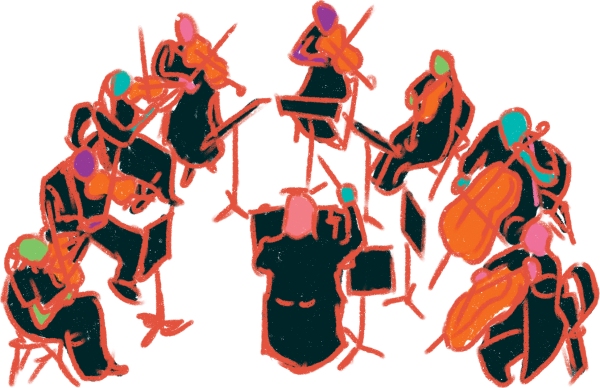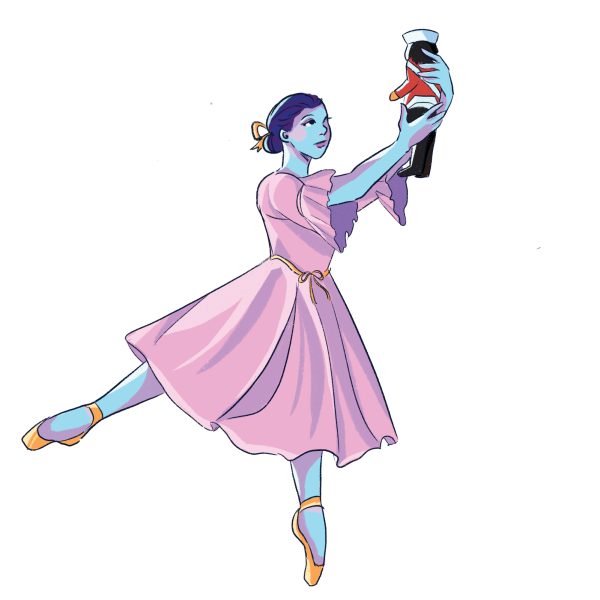From the Screen to the Stage: Behind the Curtains of Legally Blonde: The Musical
February 18, 2020
It is not always easy to fully appreciate something’s story just by looking at it. Just like you’d probably never know how your paper clips were made without extensive scientific research in the form of How It’s Made episodes, the same concept applies to musicals: it is hard to speak to the months of blood, sweat, tears and soul poured into the making of a show.
At LASA, production for the annual musical starts when theater director Melissa Driscoll picks out a script. She goes to publishers’ websites, where she can find song selections for many different musicals. When she finds one she likes, she can order a perusal or a sample of the show’s soundtrack.
“They send you a script and a CD, and you get to listen to the broadway recording,” Driscoll said. “Then, you sign a contract once you choose, and you go from there.”
When looking for actors and actresses, Driscoll sends out an audition notice. Depending on the situation, potential cast members can send in a video of their audition or do one in person. For musicals, students are expected to sing, dance and act in order to get a role. After an initial screening audition, some students are called back for more auditioning.
“Everybody thinks that we always call the leads back, but that’s not actually true,” Driscoll said. “We only called back for four of the leads this time because the voice parts are a lot simpler. We were actually more focused on the middle group of principals because the dancing was so heavy, and they had to sing, they had to solo dance, and that’s much harder.”
Driscoll looks for many things when watching auditions, like directability. However, against the old adage, one of the most important things is that the student easily slips into character.
“If you look at everything you watch, an actor doesn’t just speak, they don’t just sing, you’re looking at all of their facial expressions and their body, that they’re embodying a character and that they’re not being themselves,” Driscoll said. “They’re not being hunched over LASA students when they’re trying to be 30-year-old men.”
Driscoll said there are far more people involved with the play than just the actors and actresses on stage. At the end of each year, students can apply for an officer position, which they keep throughout the entirety of the next school year. The stage manager is one position that is constantly changing, with a turnover nearly every show. Stage managers are responsible for keeping everything running smoothly. Legally Blonde’s stage manager was junior Paul Springer.
“I have to put in a sign-up sheet, then I have to take people to warm-ups, make sure the schedule is going and make sure everything is going according to schedule,” Springer said. “That’s on a day-to-day basis. When it comes to the show, I have to sit in the light booth, and I have to call cues. Basically, I have a big binder that has the script in it that has flags, which signify which cues need to be called at what time. So, as the show is going, we’ll call them, and people will be on headset listening.”
Driscoll relies on other students, like the technical directors, assistant technical directors and a publicity team to help make sure the show is a success. Junior Carl Friesenhahn works to build all the props needed for shows throughout the year. Friesenhahn said his job gets stressful, but his workload is dependent on the show being performed. As he said, some shows require more props than others.
“I see all we need, and which character it is used for and which scene it’s used for, and then I either find the props, make the props out of wood, foam, paint or some combination of some other materials,” Friesenhahn said.
Students participating in theater are often not limited to one side of the curtain, however. There are a lot of students who are “swings”, or people who do both the tech side and the acting side.
“We’re a huge swing department,” Driscoll said. “That is not the common thing, a lot of places make you separate. We boast that. You need to be able to do both. You need to understand. The more seamlessly you can do both, the better the story is going to be.”
There are also some positions that are specific to a musical. For example, the lead choreographer, freshman Samantha Mason, teaches students the dances they will be performing during the show and is also in charge of creating the dances and adapting them when needed.
“We added a set piece to one of the Delta Nu scenes, so we had to completely re-choreograph a kickline that we had planned to be on top of the pyramid or on top of the set piece,” Mason said. “That was the biggest choreography change, and we had to do it in 10 minutes so we could continue the run through.”
Making changes during production is common, according to senior Ronnie Ashley. In fact, Ashley, who plays Legally Blonde’s main character, Elle, said there is an involved process for changes done during production to make sure they are seamlessly integrated.
“It happens before shows and afterwards,” Ashley said. “Sometimes, based on what just happened, our director makes notes based on what she wants to change or wants to keep and stuff like that. We go through them and discuss and make sure that it’s possible to make those changes.”
According to Driscoll, adding an element of singing and dancing creates a unique form of entertainment. She said musicals tend to incorporate a more lighthearted feel because the actors and actresses sing and dance.
“People don’t break out into song in the middle of the day,” Driscoll said. “You have to try to keep reality, but you’re literally singing and dancing, but that’s what people like to see. It’s fun, it’s excitement. They get to see something that they’re not used to seeing in real life.”








